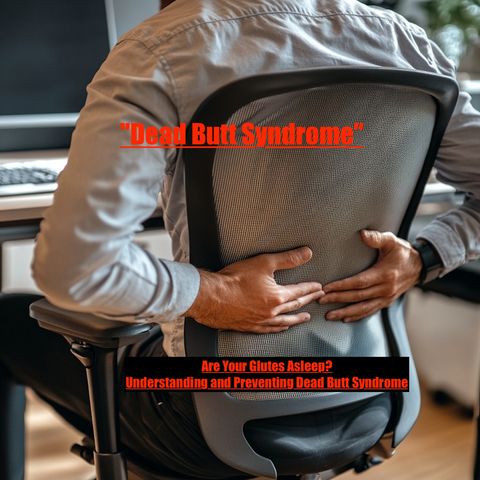10 SET 2024 · "Dead Butt Syndrome," also known as gluteal amnesia, is a condition where the gluteal muscles (the buttocks) become weak or inactive due to prolonged sitting or inactivity. This can lead to discomfort, poor posture, and other related issues like lower back pain or hip tightness. The glutes, being a central part of the body's movement and support system, can “forget” to function properly when underused. While the term might sound humorous, the consequences are anything but. When the gluteal muscles don’t activate as they should, other muscles in the body—often the lower back and hamstrings—compensate, leading to a host of musculoskeletal issues. Athletes, sedentary workers, and even fitness enthusiasts can experience this condition, as it can develop from a lack of proper movement patterns or poor posture, particularly from long periods of sitting at a desk or in a car. Causes and Symptoms The most common cause of Dead Butt Syndrome is prolonged sitting, especially when paired with a lack of physical activity. When you sit for long stretches, your hip flexors (the muscles that help lift your legs) shorten, while your glutes essentially switch off. Over time, this inactivity causes the glutes to weaken and “forget” how to function properly. Other contributing factors include: Improper workout routines: Even those who exercise regularly can develop Dead Butt Syndrome if they fail to engage their glutes properly during exercises, such as squats or lunges. Focusing too much on quads or hamstrings, for instance, without activating the glutes can contribute to this issue. Sedentary lifestyle: Desk jobs or frequent sitting can accelerate the problem, leading to weak or inactive glutes. Over-reliance on other muscles: When glutes aren’t firing, the body compensates by using other muscles, particularly the lower back and hamstrings, which leads to muscular imbalances and overuse injuries. Symptoms of gluteal amnesia can range from mild to severe, and they may include: Pain or tightness in the hips or lower back. Knee discomfort due to poor movement patterns. General weakness in the glutes or difficulty activating them during exercise. Poor posture, especially noticeable when standing or walking. Prevention and Treatment The good news is that Dead Butt Syndrome is treatable and preventable. The key lies in recognizing and correcting muscular imbalances before they lead to chronic pain or injury. Here are some key approaches: Glute activation exercises: Regularly performing exercises that specifically target the glutes, such as bridges, clamshells, hip thrusts, and lateral band walks, can help to reawaken and strengthen these muscles. Posture and movement: Improving posture and taking frequent breaks to stand and move during prolonged periods of sitting can prevent the onset of gluteal amnesia. Standing desks and ergonomic adjustments can also help. Stretching: Stretching the hip flexors and incorporating yoga or Pilates into your routine can help relieve tightness and prevent muscular imbalances that contribute to the condition. Foam rolling and massage: Myofascial release techniques, such as foam rolling the hips, thighs, and glutes, can help alleviate tightness and restore proper muscle function. Professional guidance: Consulting a physical therapist or trainer to assess your movement patterns and provide corrective exercises is particularly important if the issue is chronic or causing discomfort. The Bigger Picture Dead Butt Syndrome isn’t just a funny name—it reflects a larger issue related to modern lifestyles. In an age where many of us spend long hours sitting at desks, commuting, or lounging, conditions like gluteal amnesia are becoming increasingly common. Addressing the problem isn’t just about fixing one muscle group—it’s about maintaining a healthy, balanced body that moves properly and functions at its best. Taking the time to incorporate glute-focused exercises and pay attention to posture can prevent long-term discomfort and injuries, ensuring that the glutes continue to play their essential role in the body’s movement chain. Whether you’re an athlete, desk worker, or someone who spends a lot of time seated, avoiding gluteal amnesia should be a priority. Conclusion Dead Butt Syndrome may have an amusing name, but its impact on your body is serious. Left untreated, it can lead to other health complications, such as lower back pain, hip tightness, and knee injuries. The key to addressing it lies in awareness: recognize the problem early, and incorporate regular glute activation, movement, and stretching to ensure that your body continues to function at its best. So the next time you feel like you’ve been sitting too long, stand up, do a few glute bridges, and keep those muscles awake and active! Thanks for listening and remember to like and share wherever you get your podcasts.


